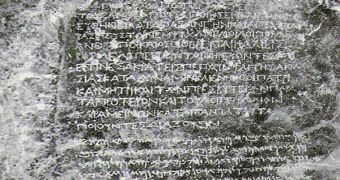Aramaic is one of the oldest languages on the planet, and it is classified as part of the Afroasiatic language family. The Semitic language's history extends back 3,000 years, during which time it had been used to administer empires, to worship the gods, and also as the language of the commoners, during the Second Temple period of Israel. Various Christian, Jewish and Muslim groups of the Middle East still speak one of its modern forms today. In spite of its longevity, there are still ancient scripts and tablets featuring it that have yet to be deciphered, so experts are now using modern technologies to get the job done, PhysOrg reports.
University of Southern California (USC) West Semitic Research Project members are now helping colleagues at the University of Chicago (UC) Oriental Institute obtain highly accurate images of inscriptions that have been laid on clay thousands of years ago. The 700 Aramaic administrative documents were either etched on the clay tablets with styluses, or were inked over using early pens and brushes. There are, of course, some tablets that feature both kinds of writing, but the thing is that the passing of time has not been kind to the artifacts.
As a result, some of the letters and incisions that were made on the tablets have become invisible under natural light, as the pigments faded. Scientists with the West Semitic Research Project have extensive experience with rendering highly detailed, electronic images of such inscriptions, so their help is invaluable to the UC team. One method of making out faded letters is using polarized and filtered light. This allows them to see the letters without interferences from stains or glares.
The Polynomial Texture Mapping (PTM) tool is also extremely important in the investigations, as it can make out the marks left behind by styluses under various lighting conditions. This allows for the larger parts of the text to be fully recovered. The documents are part of the Persepolis Fortification Archive, a large group of administrative texts that was written in the official language of the Achaemenid Persian Empire. Persepolis was the capital of the empire, and most states around it used Aramaic for their international treaties.
“This is a wonderful way to look at seal impressions. Some of the impressions are faint, or incomplete, on curved surfaces or damaged surfaces. Sometimes Aramaic text is written across them. You need to be able to move the light around to highlight every detail, to see the whole picture,” University of Colorado Associate Professor of Classics Elspeth Dusinberre explains. The expert is also a collaborator for the Persepolis Fortification Project
“We don’t have many archives of this size. A lot of what’s in these texts is entirely fresh, but this also changes what we already knew. There are words I know were used in later dialects, for example, but I didn’t know they were used at this time or this place, Persia in 500 B.C. For an Aramaicist, this is quite an important discovery,” Vanderbilt University Divinity School Assistant Professor Annalisa Azzoni says.

 14 DAY TRIAL //
14 DAY TRIAL //